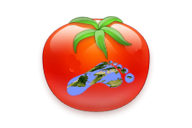
How much does eating locally-produced food help the climate problem? What are the other potential environmental and social benefits of eating locally-grown/produced food? Do you have a food garden in your school or at home? If not, do you want one?
Home Grown >
Home Grown

One way to decrease carbon emissions and to help the planet is to grow your own food/have a garden. Growing your own food and produce is very beneficial to the environment. It reduces plastic pollution, food waste, pesticide usage, and carbon admissions. This allows food to trap carbon dioxide. At the beginning the cost of these gardens may be pricey but it will extend over a long period of time but it will be beneficial. Growing your own food will have an increase on your mental health, productivity, home for pollinators and greenhouse gasses. We will see a decrease in food bills because it will just be coming from your yard. You can start growing your own produce by starting with a vegan garden, vegan gardens are an organic method of growing your own produce, without the use of animal products. This is beneficial due to the fact that it promotes plant growth, and keeps our bodies from unnatural fertilizers and powerful pesticides. These plants can provide more nutritious vitamins, minerals, and antioxidants to your system. The healthiest plants to grow on your own consist of spinach, carrots, sweet potatoes, broccoli, kale, green peas, tomatoes, and brussel sprouts. Studies show that growing your own garden can help your anxiety and stress levels. Gardens help to provide an escape from normal daily life. Not only does growing your own food help improve your physical and mental health, it helps the environment. Growing your own food means there’s no need for plastic/harmful packaging. Not only do plastics pollute the earth but the microplastics that enter your body can be severely damaging. Microplastics can enter your body though any plastic materials that have touched plastic, and it's not something small that isn't noticeable, scientists have been noticing for more than a decade. “There were around 3,000 [plastic materials] when I started researching microplastics over a decade ago,” Leslie says. “Now there are over 9,600. That's a huge number, each with its own chemical makeup and potential toxicity.” (Pinto- Rodrigues). Home grown food increases soil carbon and it decreases carbon emissions by reducing the plastic usage. Home grown food has many benefits!
https://extension.illinois.edu/blogs/il … all%20farm.





